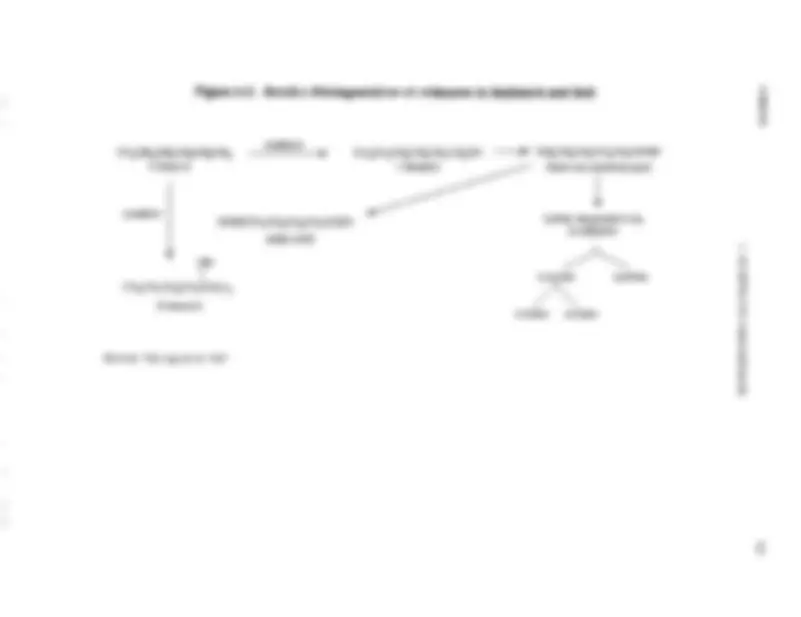


















Study with the several resources on Docsity

Earn points by helping other students or get them with a premium plan


Prepare for your exams
Study with the several resources on Docsity

Earn points to download
Earn points by helping other students or get them with a premium plan
Community
Ask the community for help and clear up your study doubts
Discover the best universities in your country according to Docsity users
Free resources
Download our free guides on studying techniques, anxiety management strategies, and thesis advice from Docsity tutors
The sources of n-hexane, its environmental impact, and potential human exposure. It covers releases from refined petroleum products, fungi, and terrestrial vegetation, as well as the chemical and physical properties of n-hexane and its removal mechanisms. The document also mentions the challenges in measuring low-level concentrations and provides some data on ambient air concentrations and potential health effects.
What you will learn
Typology: Lecture notes
1 / 24

This page cannot be seen from the preview
Don't miss anything!

















n- Hexane is a highly volatile component of the paraffin (also the alkane or aliphatic) fraction of crude oil and natural gas, and it is a constituent of heating and motor fuels refined from petroleum. Exposure from contact with vapors or emissions from these refined petroleum products is the most widespread form of low-level exposure for the general population. Most n- hexane in these fuels is oxidized (and therefore destroyed) as part of the combustion process to provide heat or drive internal combustion engines. Small amounts of n- hexane, along with other petroleum compounds, volatilize to the atmosphere during handling, storage in fuel tanks, or through incomplete combustion. Recent research (Ahearn et al.1996) suggests that certain fungi may be able to produce n- hexane. These fungi may be common in older buildings, and in some parts of the country may provide exposures from previously unsuspected indoor sources. n- Hexane is also produced as a relatively pure product for a number of specialized end uses, primarily as a solvent or as a component of certain glues and adhesives. Especially in urban areas, n- hexane may be a typical component of nonpoint source runoff when rainfall washes hydrocarbons deposited on roads and other surfaces into surface waters. Spills of refined petroleum products or of commercial n- hexane products may introduce n- hexane into soils or surface waters. Around urbanized areas, spill sites, refineries, tank storage facilities, underground storage tanks (e.g., at gas stations), or waste sites, can be sources of n- hexane subsequently transported into sediments or groundwater. Once introduced into deeper sediments or groundwater, n- hexane may be fairly persistent since its degradation by chemical hydrolysis is slow and opportunities for biodegradation may be limited under anoxic conditions or where nutrients such as nitrogen or phosphorus are in limited supply. In the atmosphere, the main degradation pathways involve destruction through the action of free radicals such as hydroxyl radicals.
n- Hexane has been identified in at least 60 of the 1,467 current or former EPA National Priorities List (NPL) hazardous waste sites (HazDat 1998). However, the number of sites evaluated for n- hexane is not known. The number of these sites within the United States can be seen in Figure 5-1.
5.2 RELEASES TO THE ENVIRONMENT
According to the Toxics Release Inventory (TRI), in 1996, a total of 70,685,942 pounds (32,062,933 kg) of n- hexane was released to the environment from 534 reporting facilities (TRI96 1998). Table 5-1 lists amounts released from these facilities. An estimated 77,303 pounds (35,064 kg) was released to publicly owned treatment works (POTWs), and an estimated 11,625,623 pounds (5,273,348 kg) were transferred
offsite (TRI96 1998). The TRI data should be used with caution because only certain types of facilities are required to report. This is not an exhaustive list.
Since n- hexane is a component of refined petroleum products, there is considerable potential for releases to environmental media through the use of heating and motor fuels. Table 5-2 summarizes the uses of petroleum products according to major demand categories (e.g., “ transportation ” ) and displays estimated use levels in barrels (and liter equivalents) and by percentages for the various end-use demands for specific fuel types (e.g., kerosene or fuel oil). While n- hexane can be a minor constituent (less than 1% by weight) of several of these petroleum products, its physical properties as a light alkane make it most suitable for use in gasoline. Approximately 98% of the demand for gasoline involves transportation, mainly cars and trucks. The composition of gasolines has changed over the years, mainly in an effort to maintain the so called octane ratings of the fuels. Since the 1980s the growing use of nonleaded gasolines has led to a growing percentage of high-octane benzene and toluene in gasoline blends. For modern gasoline mixtures, the total percentage by weight of the n- hexane component is approximately 3% (Brugnone et al.1991; Heath et al.1993; Stelljes and Watkin 1993). Of the 2,608 million barrels of motor gasoline consumed for transportation in 1992 (designated “ transportation ” in Table 5-2) about 27,300 million pounds (12,409 million kg) are from the n- hexane fraction (PennWell 1994; Stevens 1988). This figure is about 76 times the 358 million pounds (143 million kg) of commercial n -hexane produced annually in the 1970s (Marks et al.1980). Most gasoline, along with its n -hexane fraction, is consumed during its combustion in motor cars and other engines. However, gasoline use results in a variety of emission losses from refueling, evaporation while gasoline is stored in fuel tanks or ignition systems, and exhaust releases when there is incomplete combustion of fuels (EPA 1994h). EPA only tracks trends in total hydrocarbon or total volatile organic compound (VOC) emissions, so that quantitative estimates for the n- hexane released from automobiles and trucks are not available. Assuming that only 1% of the n- hexane of motor fuels is released to environmental media, such releases could be on the same order of magnitude as the total amount of relatively pure n- hexane associated with the major end-uses described in Chapter 4. In addition to emissions to the atmosphere, releases from heating and motor fuel uses to other environmental media are possible as a result of leaks and spills at refineries, pipelines, large tank batteries (or tank “ farms ” ), above- and below-ground storage tanks, tanker trucks and railroad tanker cars, or from minor releases at garages or around homes and workplaces. Crude oil spills also result in the release of n- hexane to the air or other environmental media.
In addition to releases associated with the ordinary use of refined petroleum products as a fuel, ongoing research (Ahearn et al.1996) suggests that a variety of fungi found in ducts and insulation materials in homes or office buildings are capable of releasing gases that include n- hexane.
Where the buildings have poor ventilation properties, commonly referred to as “ sick-building syndrome ” (Sundell 1996), the indoor air releases of n- hexane may sometimes be sufficient to pose public health concerns. n- Hexane is also among the various off-gassing constituents encountered at sanitary landfills (Brosseau and Heitz 1994; O’Leary and Walsh 1995). There is also evidence (McKay et al.1996) that marine phytoplankton produce a variety of non - methane hydrocarbons, including small amounts of n- hexane, from the metabolism of polyunsaturated lipids in dissolved organic materials. Very small amounts of n -hexane may also be among the biogenic emissions from different types of terrestrial vegetation (Isidorov et al.1985; Winer et al.1992).
5.2.1 Air
According to the Toxics Release Inventory (TRI), in 1996, the estimated releases of n- hexane of 58,649,487 pounds (26,603,233 kg) to air from 534 reporting facilities accounted for about 82.9% of total environmental releases (TRI96 1998). Table 5-1 lists amounts released from these facilities. The TRI data should be used with caution because only certain types of facilities are required to report. This is not an exhaustive list.
Most releases of n- hexane to environmental media are to air. Based on its Henry’s law constant, n- hexane discharged to water will volatilize rapidly; however, the amount volatilized will vary depending on a number of factors including the temperature, turbulence, and depth of the receiving water. n- Hexane spilled onto surface soils will also volatilize to the air. Data sources were not identified allowing comprehensive quantitative estimates of the amount of n- hexane released on an annual basis to the air. In addition to releases from such commercial applications as edible oil extraction, the other major sources of atmospheric releases would be from emissions related to the n- hexane contained in heating and motor fuels.
n- Hexane was identified in air samples collected at 17 of the 60 NPL hazardous waste sites where it had been detected (HazDat 1998).
5.2.2 Water
According to the Toxics Release Inventory (TRI), in 1996, the estimated releases of n- hexane of 215, pounds (97,875 kg) to water from reporting facilities accounted for less than 1 percent of total environmental releases (TRI96 1998). Table 5-1 lists amounts released from these facilities. The TRI data should be used with caution because only certain types of facilities are required to report. This is not an exhaustive list.
n- Hexane is probably released to water from a number of sources including industrial discharges, effluents from municipal waste-treatment plants, and nonpoint-source runoff from roads and other surfaces. Insufficient information is available to quantify the releases in a comprehensive fashion.
n- Hexane was identified in surface water at one site and in groundwater at 20 sites among the 60 NPL hazardous waste sites where it had been detected (HazDat 1998).
5.2.3 Soil
According to the Toxics Release Inventory (TRI), in 1996, the estimated releases of n- hexane of 16, pounds (7,337 kg) to soil from reporting facilities accounted for less than 1 percent of total environmental releases (TRI96 1998). Table 5-1 lists amounts released from these facilities. The TRI data should be used with caution because only certain types of facilities are required to report. This is not an exhaustive list.
n- Hexane is probably released to soil or sediments from spills and during the landfilling of sludges and other wastes generated from industrial processes and municipal sewage treatment; however, no specific quantitative information concerning release levels for n- hexane-containing wastes was located in the literature.
n- Hexane has been identified in soil samples collected at 14 and sediment samples collected at two of the 60 NPL hazardous waste sites where it was detected in some environmental media (HazDat 1998).
5.3.2 Transformation and Degradation
5.3.2.1 Air
n- Hexane does not absorb ultraviolet (UV) light at 290 nm and is thus not expected to undergo direct photolysis reactions. The dominant tropospheric removal mechanism for n- hexane is generally regarded to be decomposition by hydroxyl radicals (Atkinson and Carter 1984; Atkinson et al.1982). Calculations assuming typical hydroxyl radical concentrations suggest a half-life of approximately 2.9 days (SRC 1994b). While n- hexane can react with nitrogen oxides to produce ozone precursors under controlled laboratory conditions (Montgomery 1991), the smog-producing potential of n- hexane is very low compared to that of other alkanes or chlorinated VOCs (Kopczynski et al.1972). Hydroxyl ion reactions in the upper troposphere, therefore, are probably the primary mechanisms for n- hexane degradation in the atmosphere. As with most alkanes, n- hexane is resistant to hydrolysis (ASTER 1995; Lyman et al.1982). The proposed decomposition of n- hexane in air is shown in Figure 5-2.
5.3.2.2 Water
Although few data are available dealing explicitly with the biodegradation of n- hexane in water, neither hydrolysis nor biodegradation in surface waters appears to be rapid compared with volatilization. In surface waters, as in the atmosphere, alkanes such as n- hexane would be resistant to hydrolysis (ASTER 1995; Lyman et al.1982). Biodegradation is probably the most significant degradation mechanism in groundwater. One study was identified (McClay et al.1995) that documented the ability of Pseudomonas mendocina bacteria to metabolize n- hexane in laboratory microcosms simulating groundwater conditions. Mixed bacterial cultures as well as pure cultures are documented as capable of metabolizing n- hexane under aerobic conditions (Heringa et al.1961; Rosenberg et al.1992). A study of a biofiltration system to remove VOCs from air used a sludge-like composting biofiltering system that was effective in causing the biodegradation of n- hexane (Morgenroth et al.1996); this study involved a special composting system to allow the introduction of nitrogen fertilizers to overcome a nutrient limitation. Most of the available literature deals with petroleum mixtures containing several types of alkanes. In general, linear alkanes (such as n- hexane) are viewed as the most readily biodegradable fractions in petroleum (Leahy and Colwell 1990), particularly when oxygen is present in solution.
5.4.1 Air
Concentrations of n- hexane in the air can be expressed as parts per million by volume (ppmv) or as mg/m^3. For n- hexane, 1 ppmv = 3.52 mg/m^3 , and for lower concentrations, 1 part per billion volumetric (ppbv) = 3.52 μg/m^3 (HSDB 1996). n- Hexane is found at low levels in both rural and urban ambient air, with concentrations generally well below 50 ppbv for ambient air. In remote sites, readings of less than 0.5 ppbv are typical. A study of four rural sites in southern Canada showed median ambient air concentrations of n- hexane in the range of 0.01 to 0.12 ppbv (Bottenheim and Shepherd 1995). Higher levels can be encountered in urban areas, largely due to emissions from automobile exhaust. In the polluted atmosphere of the Los Angeles central business district, ambient air concentrations as high as 25 ppbv were documented in the 1960s (Neligan 1962); these levels are very similar to the concentrations of n- hexane measured in automobile exhaust collected during the same time period. Samples from Los Angeles in 1968 showed n- hexane levels of 82 ppbv (Kopczynski et al.1972). With progressive improvements in emission controls, the levels of many air pollutants in urbanized areas today are generally far lower. A recent study of average VOC concentrations in the ambient air of several large cities showed the following results for n- hexane: Vienna 2.2 ppbv; Hamburg 3.8 ppbv; Sydney 2.1 ppbv; Chicago 2.0 ppbv; Osaka 5.5 ppbv; and Athens 1.6 ppbv (Moschonas and Glavas 1996). Air samples from Kuwaiti houses after the Gulf War (which introduced large amounts of air pollutants from burning oil) showed average n- hexane levels of only 4.4 ppbv (Bouhamra 1995).
n- Hexane may be expected to comprise around 2% of the VOCs in urban air polluted with hydrocarbons from automobile emissions or other combustion byproducts (Barrefors and Petersson 1993). The n- hexane concentrations in urban air will typically be approximately 60% of the concentrations of benzene (Daisey et al.1994). Close proximity to the exhaust systems of cars or other gasoline-powered vehicles can lead to exposures to increased concentrations of n- hexane. Under rush-hour conditions, the concentrations in the interior air of buses will tend to be lower (55 μg/m^3 or 19.8 ppbv) than the interior levels in cars (69 μg/m^3 or 24.9 ppbv) or the air around persons riding motorcycles (106 μg/m^3 or 38.1 ppbv) (Chan et al.1994). Transportation tunnels may contain hydrocarbon concentrations around six times the levels encountered with ordinary ope n- air vehicular traffic; this is probably associated with similarly elevated levels of n- hexane (Barrefors and Petersson 1993). Measurements of hydrocarbons from vehicular exhaust at the Fort McHenry Tunnel in Baltimore, Maryland, have shown n- hexane levels just under 60 ppbv (Zielinkska et al.1996). n- Hexane does not seem to be present in tobacco smoke, although such smoke can lead to elevations in the concentrations of other hydrocarbons in the air of interior rooms (Barrefors and Petersson
work at a reclaimed oil refinery site showed levels as high as 121.51 mg/m^3 (43.70 ppmv) in the air around a backhoe digging trench in the petroleum-contaminated soils (Verma et al.1992). Samples from the same study averaged over a typical 8-hour workshift for the area around the backhoe showed average levels of 3.06 mg/m^3 (1.10 ppmv). Even higher levels (perhaps in excess of 10,000 ppmv) are possible around large spills of n- hexane; at such elevated concentrations, as with many components of gasoline-type hydrocarbons, there could be considerable danger from explosions, which are possible when the n- hexane levels exceed approximately 1.2% of the volume of air (Merck 1989). Since 0.1% by volume is equivalent to 1,000 ppmv, this flash-point level for n- hexane would be at a level of 12,000 ppmv or higher.
5.4.2 Water
In general, data on levels in water or groundwater are very limited, with no information being identified in the literature. Information on levels in public water supplies was not identified. Since n- hexane is highly volatile, typical treatment techniques for drinking water supplies in larger towns and cities would be expected to volatilize the n- hexane before it could enter the distribution system. It is likely that some n- hexane would be found in groundwater contaminated by gasoline leaks from underground storage tanks (UST). This could be a matter of concern for some domestic groundwater wells used for drinking water supplies. Since the emphasis in UST programs is usually on the more soluble aromatic fractions (e.g., benzene) or on bulk measurements of total petroleum hydrocarbons (TPH) (Potter 1993), no information could be identified in the literature dealing explicitly with n- hexane.
5.4.3 Sediment and Soil
Very little information could be identified dealing with n- hexane levels in sediments and soils. n- Hexane has been identified among the contaminants in an offsite oilfield-disposal pit in New Mexico (Eiceman et al. 1986). Since n- hexane is a trace constituent of crude oil and natural gas, as well as a component of refined petroleum products, soil or sediment contamination with n- hexane can be expected near oilfield production sites, large soil spills, slush pits and other areas around refineries, and in waste sites where petroleum products or other n- hexane-containing wastes had been disposed. Detections would also be likely near many tank storage facilities, pipelines, truck or rail transfer sites, car repair facilities, automobile assembly or storage facilities, and auto and truck fueling facilities (DeLuchi 1993).
At many waste sites, n- hexane has been detected in the landfill gases vented from the soils at the disposal sites (Brosseau and Heitz 1994; O’Leary and Walsh 1995). While information in the literature is extremely limited, trace levels of n- hexane are probably found in the soils or the soil gases at many waste disposal sites. n- Hexane has been identified in the soil at 14 sites and in sediments at two sites among the 60 NPL hazardous waste sites where it was detected in some environmental medium (HazDat 1998).
5.4.4 Other Environmental Media
n- Hexane is exempted from analysis of most foodstuffs (the exceptions are spice oleoresins and corn endosperm oil) or as an inert ingredient in pesticide formulations (see Chapter 4; Firestone 1997). Testing for alkanes is often directed at compounds less volatile (e.g., Cl0 or higher) than n- hexane (Hernandez et al.1995). There is, therefore, limited information in the literature on the levels of n- hexane encountered in foodstuffs. Analyses carried out in the 1960s and 1970s would have sometimes involved analytical methods not considered accurate by contemporary standards. Caution is also needed in interpreting published results to make sure the testing did not involve materials that had not yet gone through the complete cycle of solvent recovery, heating, and final vacuum treatment to recover the n- hexane solvent and remove as much as possible of this hydrocarbon from the final product intended for human consumption. Before these recovery processes, the crude oil or meal products can be expected to show appreciably high levels of n- hexane. In studies of fully processed edible oil products carried out in the 1960s it was determined that n- hexane residues were generally at levels below 10 ppm (Watts and Holswade 1967). Recent investigations using more precise modern analysis techniques (Hautfenne et al.
No recent studies could be identified that were performed in the United States on levels in expired air. A study of hydrocarbon contents in expired air in the Chicago area carried out in the late 1970s found average n- hexane concentrations from 54 human volunteers breathing urban air to be approximately 4.7 ng/L (Krotoszynski et al.1979). Most studies of n- hexane have involved occupational exposures, especially in shoe or sandal factories, in Japan or Italy. Since n- hexane is rapidly metabolized by humans to such compounds as 2,5-hexanedione, investigations of toxic substances in blood or urine typically focus on these metabolites (Mutti et al.1993; van Engelen et al.1995). In one study of shoe assembly workers in
Current empirically based estimates of exposures to n- hexane in various occupations are lacking. Some insights can be gleaned from the National Institute for Occupational Safety and Health’s (NIOSH) National Occupational Hazard Survey (NOHS), a database (the NOHS database is also called the National Occupational Exposure Survey or NOES database) that estimates potentially exposed workers in a variety of manufacturing jobs (Sieber et al.1991). Based on conditions typical of the mid-1970s it was estimated that 643,120 workers had potential exposures to n- hexane (NOES 1991). Occupations with 5,000 or more workers with potential exposure risks included the following: shoe and footwear assembly workers; hospital staff and laboratory technicians; workers operating or repairing typesetting and printing machinery; construction workers, carpet layers and carpenters; auto mechanics; workers in plants manufacturing tires or inner tubes; and workers in air transport and air-freight operations. The NOES database covers only certain manufacturing sector occupations and does not include workers at edible-oil extraction facilities, who are usually classified as agricultural workers.
5.6 EXPOSURES OF CHILDREN
This section focuses on exposures from conception to maturity at 18 years in humans and briefly considers potential pre-conception exposure to germ cells. Differences from adults in susceptibility to hazardous substances are discussed in Section 2.6, Children’s Susceptibility.
Children are not small adults. A child’s exposure may differ from an adult’s exposure in many ways. Children drink more fluids, eat more food, and breathe more air per kilogram of body weight, and have a larger skin surface in proportion to their body volume. A child’s diet often differs from that of adults. The developing human’s source of nutrition changes with age: from placental nourishment to breast milk or formula to the diet of older children who eat more of certain types of foods than adults. A child’s behavior and lifestyle also influence exposure. Children crawl on the floor; they put things in their mouths; they may ingest inappropriate things such as dirt or paint chips; they spend more time outdoors. Children also are closer to the ground, and they do not have the judgement of adults in avoiding hazards (NRC 1993).
Children, like adults, are subject to low level n- hexane background exposures associated with emissions from the combustion of motor fuels or heating oil or other uses of petroleum products. Some products used in the home, such as rubber cement, contain n- hexane and could pose exposure risks to children from inhalation. In addition to inhalation exposures through the normal use of such products in poorly ventilated interior areas, children may engage in “ glue sniffing ” substance-abuse behaviors that could pose serious
inhalation exposure risks. Dermal exposures are also possible from hexane-containing household products. For very small children, accidental ingestion of hexane-containing materials is also a potential exposure risk. Other potential exposures are possible from hazardous waste sites. There have been no documented secondary or take-home exposures for children from materials transferred from the parents’ workplace on clothes, skin, hair, tools, or other objects (NIOSH 1995). Such exposure risks are not expected to be a concern with n- hexane because it is highly volatile.
Although concentration levels were not reported, studies have shown detections of n- hexane in human breast milk (Pellizzari et al.1982). In chapter 2, the discussion of PBPK modeling suggests the likelihood for breast milk transfers to nursing infants. No studies were identified dealing with levels of n- hexane in amniotic fluid, meconium, cord blood, or neonatal blood that would document prenatal exposures. There are no studies dealing with exposure or body burden measurements on children. Given the absence of such studies targeted at children, it is unknown whether children are different in their weight-adjusted intake responses to n- hexane.
5.7 POPULATIONS WITH POTENTIALLY HIGH EXPOSURES
In addition to individuals who are occupationally exposed to n- hexane (see Section 5.5), there are several groups within the general population that have potentially high exposures (higher than background levels) to n- hexane. These populations include individuals living in proximity to sites where n- hexane is produced or sites where n- hexane is disposed, and individuals living near the 60 NPL hazardous waste sites where n- hexane has been detected in some environmental media (HazDat 1998). Work situations where n- hexane is used as a solvent or in adhesives and where there are very poor ventilation conditions could also involve elevated exposure risks. Workers in poorly ventilated confined areas (e.g., warehouses, garages, tunnels) or trenches where n- hexane levels could build up from engine exhaust or from off-gassing, as in some landfill sites, might also experience higher exposures.
Workers in tire-manufacturing facilities may have a heightened potential for health hazards since the rubber vulcanization process can involve exposures to n- hexane (Graham et al.1995).
Individuals who subject themselves to substance abuse by inhaling n- hexane or vapors from products containing significant levels of n- hexane would also experience potentially high exposure levels (Altenkirch et al.1982; Graham et al.1995).